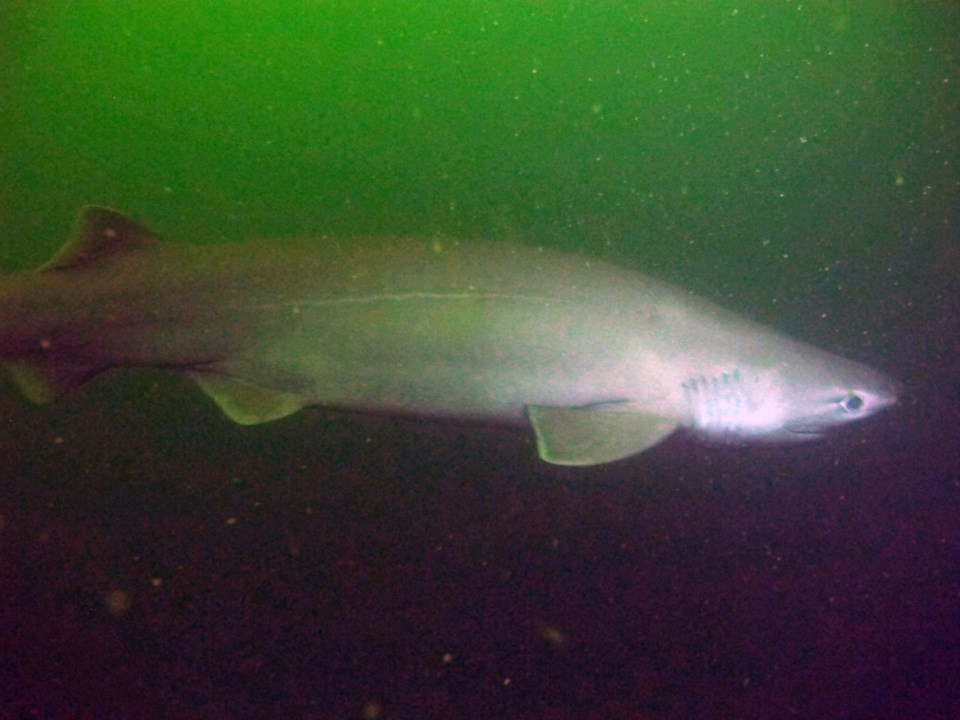Until last week, Suzanne Schloegel had never seen a humpback whale in the waters around Bowen. When it finally happened, she was a little too panicked to take a good look.
“It was a little bit too exciting,” she says, recalling her swim to the rock roughly 700 metres off Tunstall Bay beach last Monday. “I wish I hadn’t been so freaked out, it would’ve been neat to really watch it.”
Schloegel swims to the rock and back several times a week, for most of the year. On Monday, Cindy Fairbanks joined her for the first time.
On the way back in to the beach, the women heard a loud blow behind them, and Schloegel says she saw the water blow from the corner of her eye.
“I didn’t want to turn my back to it, so I started swimming on my back and just wanted to get out of there,” she says. “What I did see was a huge dorsal fin. Once we got back to the shore, it was clear that other people heard the whale, too. There were kayaks and a motor boat heading out to get a look. A little while later, the people in the motor boat confirmed that what we encountered was definitely a humpback.”
While Schloegel’s encounter with the humpback is particularly exceptional and sightings of the massive mammals in our waters are still something people get excited about, their presence here has been noted several years in a row, now. According to the Cetacean Sighting’s Network, humpback sightings in Howe Sound are down this year, as compared to last, but researchers still believe their population is growing.
What has stirred more excitement among scientists at the aquarium this summer, but what would not be apparent from the shoreline, were four reports by divers of Sixgill sharks in Howe Sound, with one of those reports coming from the Hutt Island (just north-west of Bowen).
“Until 2010, sighting a Sixgill shark in this area was unheard of. They were spotted once in 2011, and once in 2012, but four sightings in one summer is remarkable,” says Dr. Jeff Marliave, the Vice President of Marine Sciences with the Vancouver Aquarium. He adds that normally, these creatures live at depth of about three thousand feet, but seem to be coming up to shallower waters. “These are some of the oldest vertebrate life-forms around. They are very big, very, slow and have a long flat tail with no dorsal fin – so you know when you see one. But we know so little about them, so I don’t like to speculate why they are coming up closer to the surface.”
Marliave adds that in addition to the four Sixgill shark sightings, during his time on the water this summer, he’s made a number of unusual observations.
“The other day I watched six Harbour porpoises off Gambier, one did a dolphin leap. In the last quarter century, I’ve only seen one,” says Marliave. “I also saw a salmon jump out of the water the other day. I haven’t seen that since the 1980s!”
He says that seals seem to be coming deeper in to Howe Sound.
“They used to be more towards the South entrance of Howe Sound, and in the Straight of Georgia. Also, now they seem to have a pupping rate similar to what we saw in the 1980s.”
The other major changes to Howe Sound are resulting from this year’s massive sea star die-off.
“With no Sunflower stars to eat the sea urchins, the seaweed has been decimated,” says Marliave. “And there is less kelp as habitat for juvenile fish and prawns.”
Marliave says that he has seen signs of starfish recovery, particularly with the appearance of young, healthy sea stars off Bowen. However, he says that due to the unprecedented scale of the loss of sea-stars, it will take time some time for a things to return to what was previously considered “normal.”
“I predict another odd year in 2015,” says Marliave.



